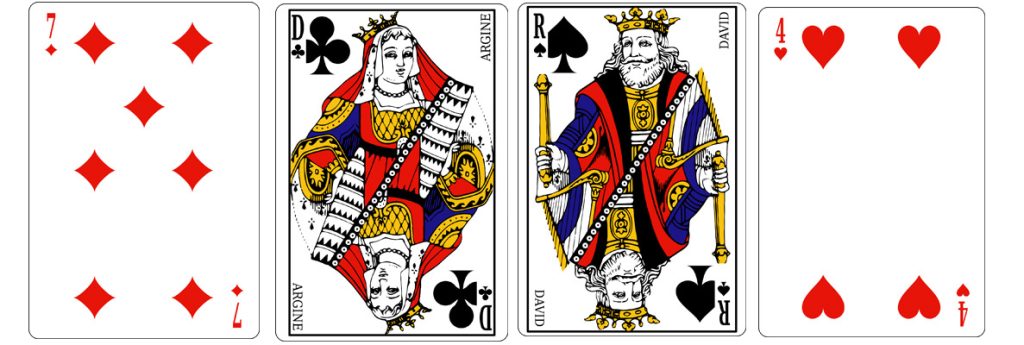By Virgil Benyayer
In the United States, the expression “Thinking outside the box has become a staple of management and coaching. It invites us to solve problems differently, by thinking outside the box. The idea comes from the nine-dot puzzle, where you have to connect the dots in four lines without lifting your pencil. Impossible… as long as you stay within the square. The solution is to draw lines beyond the visible limits.
To illustrate this approach, I’d like to share another riddle, found in an Italian book: the Italian card riddle.
In this logic exercise :
Each figure has a number on the back of its card.
The rule to check is:
👉 “Each lady has a 4 on the other side of her card”.
Question: which 2 cards should be turned over?

The first reflex is obvious: turn the queen over, to check that she has a 4 on her back.
But most people then make the classic mistake of turning over the 4 of hearts.
❌ Bad idea: the statement doesn’t say that only the 4 can be associated with a queen. A king or jack could also have a 4 on the other side, without contradicting the rule.
👉 The right answer: you have to return the queen and the 7.
Why? Because if the 7 hides a queen, the rule is wrong.
Why do we all fall into this trap? Because we tend to look for the simplest, most visible solution.
It’s called cognitive bias: like looking for your keys under the streetlight because it’s the best-lit place, rather than where they actually fell.
This riddle illustrates a reality of the professional world:
When prospecting, it’s tempting to focus solely on your immediate area. However, a qualified tour based on relevant criteria will be much more effective.
In problem-solving, the first explanation that springs to mind is not necessarily the right one. Sometimes we have to go back to a hidden cause upstream.
In management, taking a step to the side often enables us to see the problem from a different angle and find a better solution.
The Italian card riddle reminds us that in strategy, sales or management, the solution isn’t always where you think it is.
Before you act, ask yourself this question: am I taking the easy way out, or am I really thinking outside the box?
By becoming aware of this weakness, we can begin to remedy it by systematically asking ourselves whether our strategic choices are motivated by a desire for simplicity.
ON THE SAME THEME :